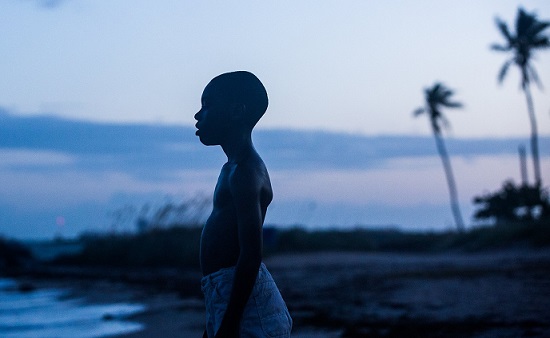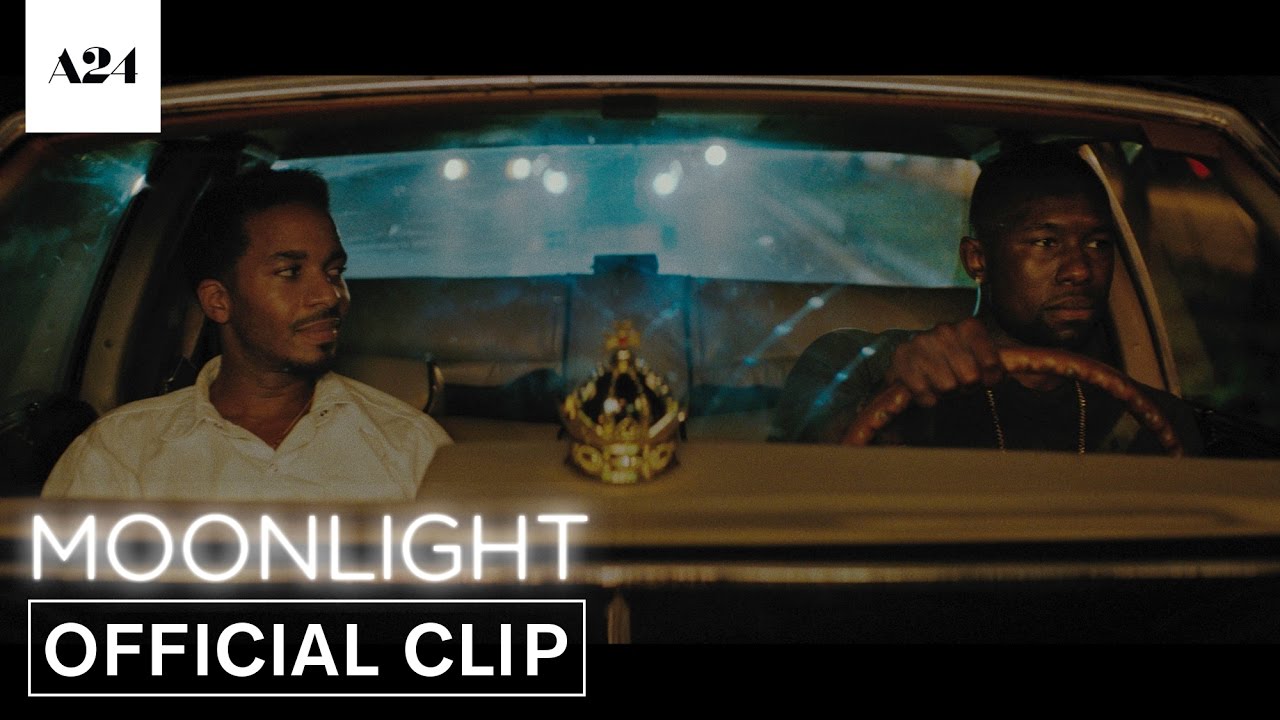History was made at the Oscars this week, as a story depicting a gay black man’s struggle to come to terms with his sexual identity won the award for best motion picture. But attempting to sum up Barry Jenkins’ Moonlight in such terms cannot possibly capture what it might symbolise to different people: a painfully exquisite cri de coeur from one black man in love with another; a paean to lost innocence; a meditation on black masculinity, its metamorphosis and eventual survival through trauma.
A further clue to its central themes also lies within the title. Originally adapted from Tarell Alvin McCraney’s autobiographical play In Moonlight Black Boys Look Blue, the film’s intense focus on the characters’ interiority is channelled through the waxing and waning life cycles of the protagonist, Chiron. Each stage in his life is coloured with different shades of emotional nuance, forming a triptych where light delicately contrasts with darkness, lyricism with brutality.
Of course, nothing reflects Moonlight’s emotional palette better than its universally acclaimed soundtrack, which was mostly the work of Harvard-educated composer Nicholas Britell. Despite not winning the Academy Award for best original score, the film’s music is, I would argue, a fundamental part of its appeal. Like the most iconic soundtracks, it is immensely evocative and conjures up entire scenes of the film when only a fragment is heard.
But more importantly, its central importance adds to the highly synaesthetic quality of Moonlight – which I believe transcends the genre of film to an experience that sits at the crossroads of narrative, visual art and music. When you’re submerged in its luscious cinematography, poignant score and human drama, it’s hard not to surrender to it all. Music becomes wordless poetry, dappled with light and shade; visual impressions flow and morph like water tinged a certain colour at different times of day.
That these numerous visual and aural contrasts coexist within one work of art is remarkable, and speaks volumes about Jenkins’ radical mission to portray black masculinity not as a series of jaded ‘types’, as one recent review wrongly suggested – but in all its complex, multifaceted glory. As moving paths of light gradually reveal something new to the eye, each listen of the Moonlight soundtrack rewards the listener with new emotional depths that were previously unaccessed.
Mimicking the film’s visual and emotional palette, Barry Jenkins draws upon a melting pot of diverse musical reference points, from 70s blaxploitation films and contemporary hip hop to Mozart. Nicholas Britell’s whisper-soft chamber orchestra compositions, often pared down to violin and piano, further add to the canvas. Jenkins describes choosing Moonlight’s music as a highly intuitive, organic process in an interview, and this certainly comes through when viewing the film.
Indeed, the soundtrack always remains effortlessly suited to the visual material in spite of how mismatched these elements may initially seem in theory. Take, for instance, the scene early on in the film where a group of black boys jostle over a ragged football to the operatic sounds of Mozart’s Vesperae solennes de confessore. The sheer power of displacing classical music from bourgeois concert halls onto scenes of ordinary life in an impoverished black community cannot be underestimated. Not only is the profane elevated to the sacred in this way, but Jenkins also emphatically shows that high art is not off limits to a suburban Miami ghetto.
Almost every element of black life can be seen in Moonlight as avant-garde, ritualistic – and therefore deserving of our attention. Even the film’s opening scene, an exchange between two neighbourhood drug dealers, is transformed from what could be a seedy stereotype to a majestic show of brotherhood when soundtracked by Boris Gardner’s ‘Every Nigger Is A Star’ – a track that hits upon every single pressure point of feel-good nostalgia.
Other songs, such as Jidenna’s ‘Classic Man’ and Goodie Mob’s ‘Cell Therapy’, are played in cars by the central character, Black. In addition to suggesting the character’s musical tastes, these more contemporary hip hop and rap songs offer us a conscious projection of how Black, the hardened drug dealer, views himself and wants to be viewed by the world. His hypermasculine idea of blackness – one that’s informed in childhood by his fatherly mentor, Juan – is performed via music in these enclosed spaces. It goes without saying that these gendered expectations are just as restrictive. Nonetheless, Black’s persona may also be comforting and familiar to him as well, as shown in a scene where ‘Classic Man’ washes over him and Kevin while they remain in silence.
Notice how the track is chopped and screwed: a technique used in hip hop where the music is digitally slowed down and the pitch altered to create completely different moods and textures. This method is especially apparent in the recurring instrumental theme that is warped and altered almost beyond recognition as Chiron metamorphoses through different life stages. Like the music, he emerges in each reincarnation as a near-stranger – albeit one with a nameless quality that’s still familiar.
The musical economy that Britell deploys to such great effect in Little’s Theme and its reiterations is a classic example of the delicate, pared-down restraint shown in the film’s sparse dialogue. But the lack of superfluous dialogue only leaves more space for all that’s unsaid between the characters – which is ultimately more powerful and emotionally charged. It is rare to find a film where the silences are almost equally as important as speech, and Jenkins pays a knowing nod to his artistic predecessor Wong Kar-Wai by including the same Caetano Veloso song – ‘Cucurrucucu Paloma’ – used in his 1997 film Happy Together.
By the end of watching Moonlight, I realised that its juxtapositions of high and low culture, classical strings and hip hop, can be interpreted as an effortless interplay rather than a clash. Its luminous sunsets and evocative night-time scenes could not be half as beautiful without the necessary contrast of (for instance) the harsh strip lighting that illuminates Chiron’s threadbare childhood home and the violence contained within it. At this point, there is nothing left to do but let the violent waves of emotion wash over you, as Little finally looks out into the blue horizon over the sound of the sea lapping against the Miami shore.
Moonlight is out in UK cinemas on limited release now



